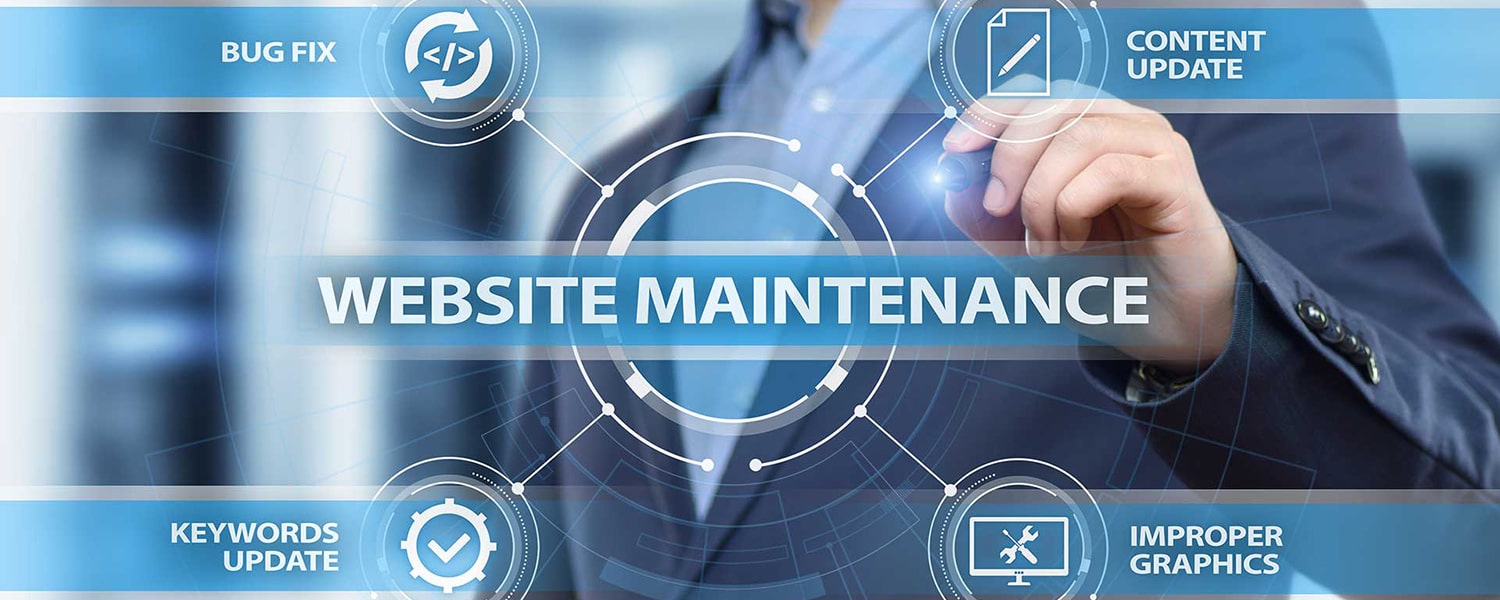Website Maintenance Best Practices: Strategies to Prevent Downtime and Enhance User Experience
In the current era of digital technology, it is crucial to not only have an online presence through a website but also to prioritise providing a smooth and enjoyable user experience. Ensuring regular website maintenance is an essential component of effectively operating a thriving online platform. Failure to address this issue might result in periods of inactivity, sluggish loading speeds, and a subpar user experience. In this blog post, we will explore the most effective strategies for website maintenance to minimise downtime and improve user experience.
Regular Backups: The Foundation of Website Maintenance
Regular backups are a vital element of website upkeep. Consider the scenario when you invest a significant amount of time and effort into developing your website, only to face the unfortunate situation of losing all your progress as a result of a server crash or a cyber-attack. Regular backups provide the assurance that you will be able to revert your website to a previous state in the event of any unexpected occurrences.
Implementing an automatic backup system is of utmost importance. This guarantees that the data of your website, including content, graphics, and customisations, is consistently backed up to a secure location. Selecting a dependable backup solution and establishing a plan that corresponds with the frequency of updates on your website is crucial.
Keep Software and Plugins Updated
Obsolete software and plugins are frequently targeted by cybercriminals as they present vulnerabilities that can be exploited. Consistently keeping your website’s content management system (CMS), plugins, and other software up to date is crucial for addressing security issues and enhancing overall efficiency.
Many CMS platforms, such as WordPress, offer automatic updates, but it is essential to frequently monitor them. Furthermore, it is essential to thoroughly assess and modify plugins to ensure their compatibility with the most recent version of your CMS. By implementing these measures, not only will your website’s security be improved, but it will also guarantee that your website operates seamlessly with the most up-to-date features and optimisations.
Monitor Website Performance
Consistently monitoring the performance of your website is crucial in order to proactively discover any potential issues that may impact the user experience. Analyse your website’s loading speed and overall performance using tools such as Google PageSpeed Insights, GTmetrix, or Pingdom. These tools provide valuable insights and data to help you optimise your website for better performance. By utilising these tools, you can confidently identify areas for improvement and make necessary adjustments to enhance the loading speed and overall performance of your website.
By optimising pictures, minifying CSS and JavaScript files, and leveraging browser cache, we can significantly reduce load times. Optimising website performance is a strategic approach that yields several benefits. By improving the speed of a website, not only does it enhance the user experience, but it also has a beneficial impact on search engine rankings. This win-win situation makes performance optimization a highly advantageous technique.
Implement a Content Delivery Network (CDN)
A Content Delivery Network (CDN) is a highly efficient network of globally distributed servers designed to deliver web content with utmost efficiency. A Content Delivery Network (CDN) optimises content delivery by caching and serving static assets such as images, CSS, and JavaScript from servers located closer to the user. This approach effectively decreases the burden on your hosting server and accelerates the delivery of content.
CDNs not only optimise website performance but also bolster its dependability by efficiently dispersing the workload across a network of servers. This feature is especially advantageous in situations where there is a sudden increase in traffic or when facing DDoS attacks. It effectively prevents any downtime and ensures a smooth user experience.
Security Audits and Vulnerability Assessments
Regular security audits and vulnerability assessments play a vital role in identifying and mitigating potential threats to your website. Conduct routine security scans to identify malware, vulnerabilities, and any other potential security concerns.
It is highly recommended to incorporate a Web Application Firewall (WAF) as a security measure against prevalent internet risks. Consistently conduct audits of user access privileges, regularly update passwords, and require the usage of two-factor authentication to significantly boost security. A secure website serves two important purposes: it ensures uninterrupted service and protects valuable user information.
Responsive Design Testing
Given the growing prevalence of mobile devices, it is absolutely essential to have an adaptable design. To guarantee optimal performance and visual appeal, it is crucial to ensure that your website is designed and developed to be responsive across a wide range of screen sizes and devices. Regular testing is essential for identifying and resolving any response issues.
Google places a high importance on mobile-friendly websites when determining search ranks. Therefore, having a responsive design not only improves user experience but also has a beneficial effect on your SEO endeavours. Utilising tools such as Google’s Mobile-Friendly Test can provide you with an effective means of assessing the mobile compatibility of your website.
404 Error and Broken Link Checks
Broken links and 404 errors have the potential to significantly impair user experience and perhaps damage the SEO of your website. It is essential to consistently monitor for any broken links, whether they are internal or external, and swiftly resolve them. One way to accomplish this is by utilising internet tools or plugins that scan your website and detect any broken links.
By incorporating custom 404 error pages that provide useful information and navigation choices, you can transform a poor user experience into a positive one when visitors come across dead ends on your website. Consistently monitoring and updating your content is crucial for preventing broken links and ensuring a seamless navigation experience.
Review and Update Content
Consistently updating and incorporating new material into your website is crucial not just for captivating your audience but also for enhancing your SEO. Search engines tend to prioritise websites that continuously offer relevant and current information.
Conduct a thorough review of the current information to confirm its accuracy, relevancy, and timeliness. Revise and refresh the information by eliminating any obsolete content and providing updated figures, facts, and references. Incorporating fresh content, such as blog posts or articles, not only maintains the dynamic nature of your website but also serves as a magnet for attracting and retaining visitors.
Evaluate Hosting Plans
The hosting architecture of your website has a crucial impact on its performance and stability. Regularly assessing your hosting plan is crucial, particularly when seeing a surge in website traffic or when considering expanding your online presence. By doing so, you can confidently analyse and optimise your hosting solution to accommodate these changes.
Take into account many elements, such as the reliability of server uptime, the quality of customer assistance, and the potential for scalability. By upgrading to a more advanced hosting plan or transitioning to a different hosting provider, you may greatly enhance your website’s performance and avoid any interruptions during periods of increased traffic.
User Feedback and Testing
User feedback is extremely important in discovering issues that may not be immediately obvious using conventional monitoring technologies. We strongly encourage users to share their feedback on their experience with our website. By doing so, we may get valuable insights and identify any issues that may have been encountered. Rest assured that we are committed to swiftly addressing any reported issues to ensure a smooth and seamless user experience. Your input is highly appreciated and plays a crucial role in helping us improve our website. Thank you for your support!
Consistently perform usability testing to pinpoint possible areas of difficulty in the user experience. This entails conducting tests on many components of your website, including forms, navigation menus, and checkout procedures. User-centric enhancements not only improve the entire experience, but also lead to increased user happiness and loyalty.
Conclusion
Website maintenance is a continuous endeavour that demands commitment and meticulousness. By incorporating these optimal strategies, you may effectively mitigate downtime, elevate customer satisfaction, and secure the sustained prosperity of your online platform. Consistently monitoring performance, regularly updating software, and remaining cautious against security risks are essential components of a thorough website maintenance approach. By dedicating time and resources to the maintenance of your website, you can expect to enjoy the benefits of a dependable, secure, and user-friendly online presence.












